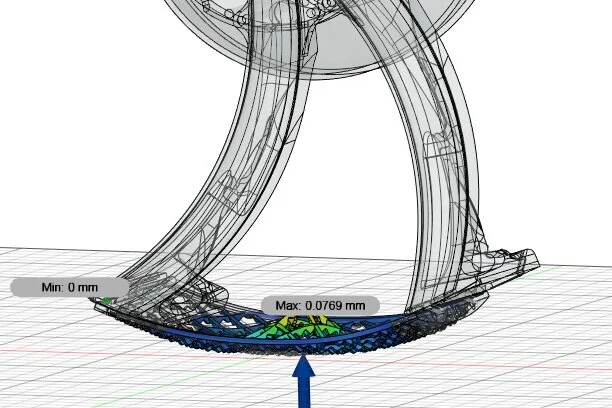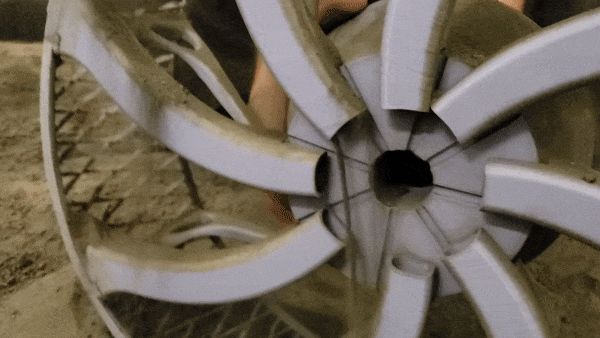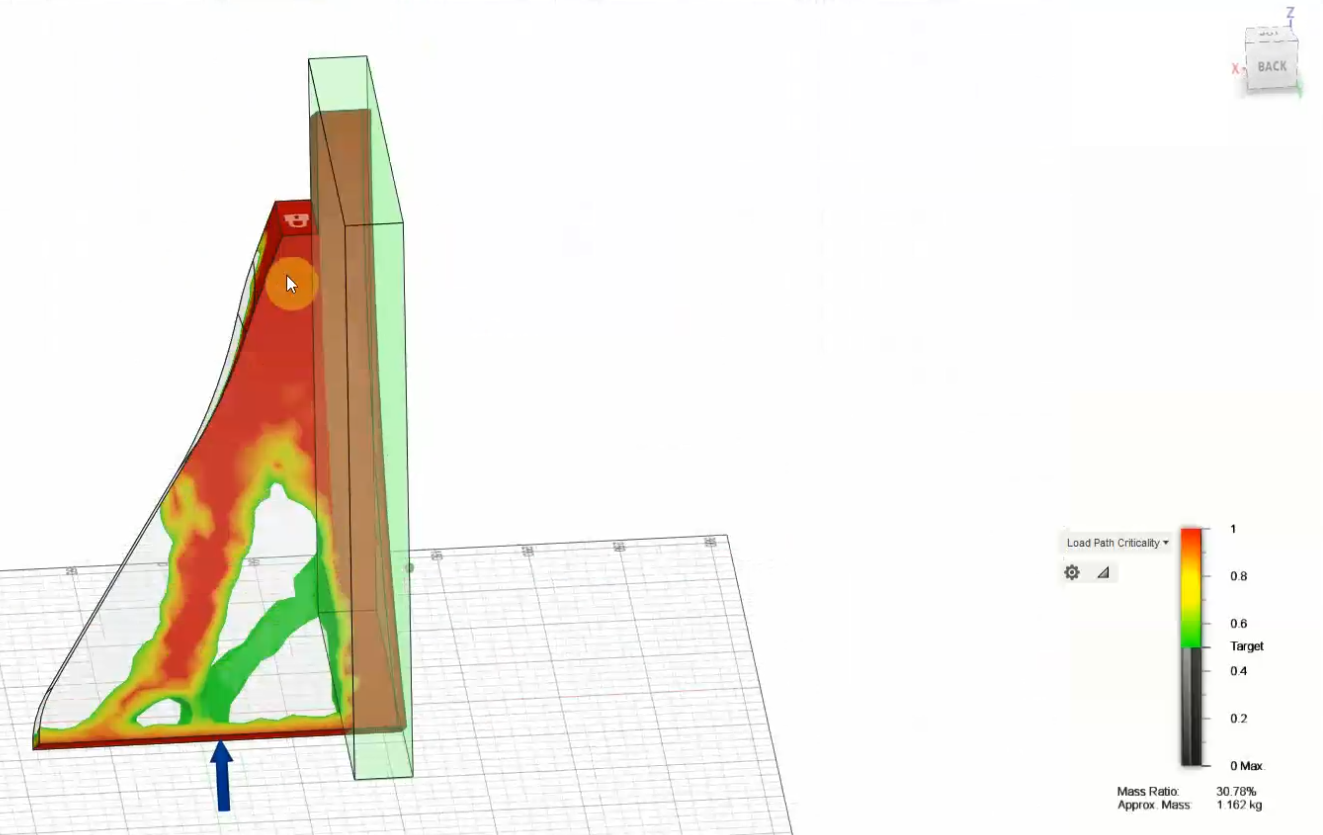Lunar Rover Wheel - Colorado School of Mines Manufacturing Innovation Competition
THE REQUIREMENTS
The first design input outlined in the competition rules stated that maximum deflection could be no more than 10% of the unloaded wheel diameter at the maximum load. Our worst case scenario - which placed a 160N static point-load on one member of a tread section - caused a deflection of <1%.
The competition mission statement requested that wheels were designed to to be packed for transport at 50% of their unpacked volume. My team’s design allowed for the wheel to collapse to 49.5% of its deployed volume; this volume calculation allowed for a over-engineered hub, which could be re-designed to better fit client needs.
The most unique design input defined by the competition organizers was that of sample collection. According to the competition, the wheel had to have a “mechanism that could be used to sample soil” as it moves; the collection could involve continuous or on-demand sampling.
Our sample collection system used curved, hollow spokes to transport lunar regolith from scoops located within the treads to a collection core within the hub - a design choice only made possible through additive manufacturing.
Though aerospace designs often put safety and function concerns above frugality, economic viability was still a consideration that was referenced throughout my team’s design process. Our final per-wheel estimate came to around $10,000. These costs could be more than made up for in the value they provided to the client. The value propositions include ease of assembly, allowance for multitasking during data gathering, and rapid soil mapping of the lunar surface.
GOING BEYOND “JUST GOOD ENOUGH”
In an effort to optimize the wheel design for additive manufacturing, my team was able to successfully perform topology optimizations that reduced the wheel’s overall weight and improved its spatial footprint while maintaining structural integrity.
My team was not satisfied with restrictions imposed by holding collected material within the collection chamber. We wanted to be able to transport collected material back to the rover. In order to achieve this mission objective, we designed and implemented a flexible mechanical conveyance system. This allowed our design to excel not just at scientific sample collection, but also at mass sample collection - which would prove vital during the construction phase of lunar colonization.
By designing the wheel to have as few unique parts as possible, we were able to increase both its ease of manufacture and ease of assembly. These efficiencies allow us to mitigate some of the greatest costs found during the formation of our company’s business model: astronaut’s time and time allotment on metal 3D printers.


Team GRATR (left-to-right): Zachary Howell, Adam Hugo, Kyle Barras







